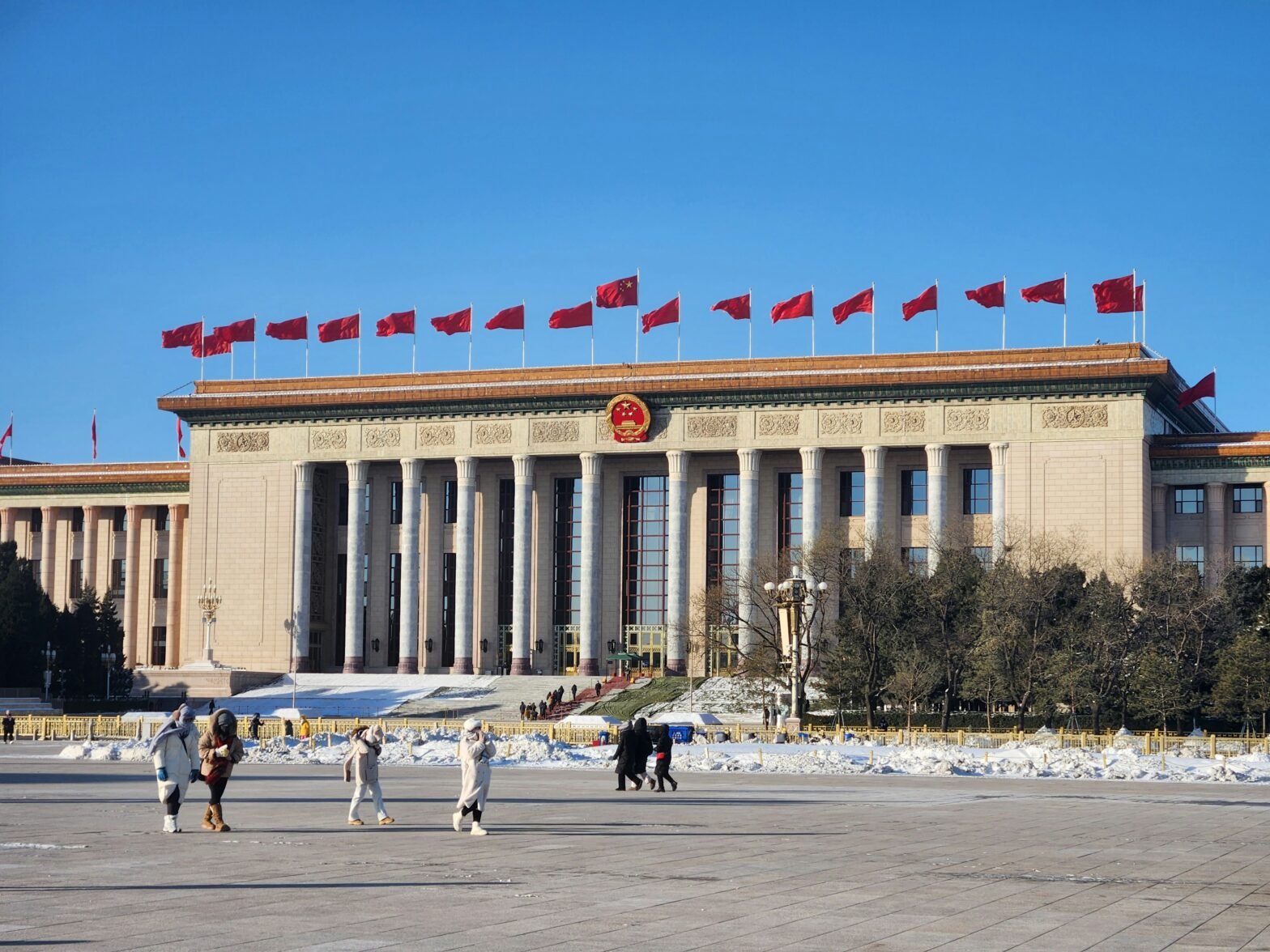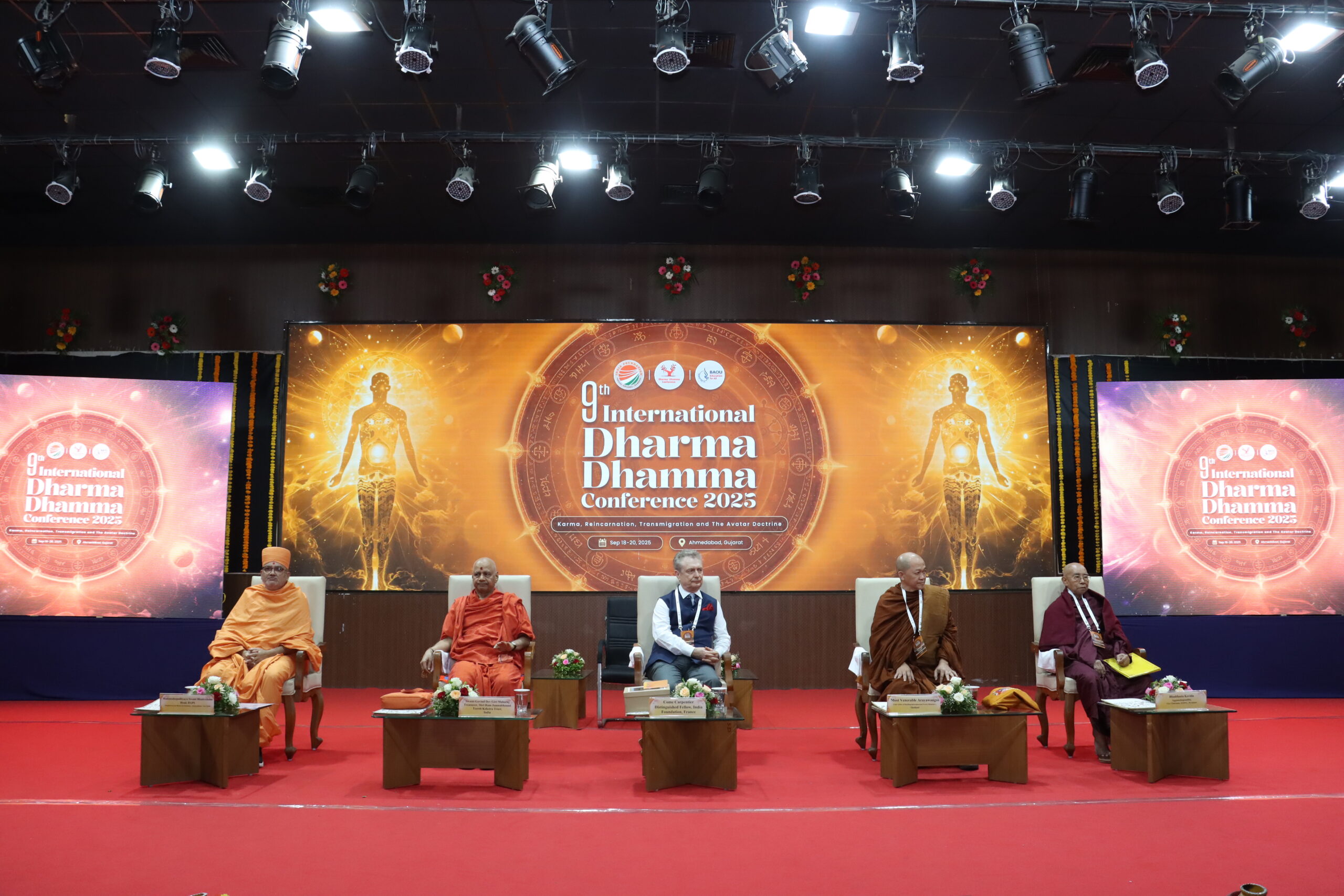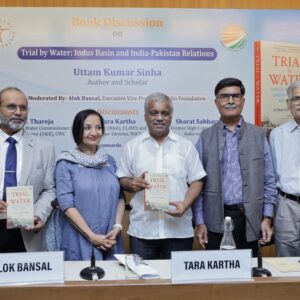Introduction
China’s foreign policy principle of “non-interference,” presented at the Bandung Conference in 1955, was a strategic move to distance itself from the Cold War bloc politics. China strengthened its relationships within the global non-aligned movement by promoting a non-interventionist stance. This concept of non-intervention took on new significance under Deng Xiaoping in the late 1970s, as he prioritised a “low profile” in foreign policy to focus on economic development. Chinese leaders believed that pursuing an assertive foreign policy could hinder China’s economic progress by limiting trade partnerships or diverting resources toward military spending rather than economic investment (Sofer, 2012).
Deng carefully employed the “keeping a low profile” (KLP) strategy to achieve selective progress. According to Deng, a balance should be maintained between achieving success in some areas and not overreaching in others. He emphasised the importance of safeguarding China’s core values, including sovereignty, regime security, and national interests. Deng also stressed the need to support the rights of developing countries, promote global and regional stability, and work towards a fair, reasonable, and just international economic and political order. However, he warned against seeking global leadership or hegemony, arguing that China should avoid overextending itself in pursuing such ambitions (Wei, 2020).
The 2008 global financial crisis and China’s subsequent rise as the world’s second-largest economy sparked debate among Chinese scholars about shifting from the ASA strategy (Attaining Some Achievements) to a more proactive international engagement proportional to its growing economic power (Chen & Wang, 2011). China officially endorsed this idea, asserting that countries should take on global responsibilities in accordance with their national strength, stating, “China will assume more international responsibility as its comprehensive strength increases” (White Paper, 2011).
When Xi Jinping came to power in 2013, the ASA strategy was revitalised and expanded into what he described as “striving for achievement” (fenfayouwei). Xi advocated for active peripheral diplomacy to secure a favourable environment for China (Yamaguchi, 2014). The Belt and Road Initiative (BRI) is a notable example of this shift. The BRI has significantly increased China’s involvement in international mediation. Research by the Mercator Institute for China Studies indicates that China engaged in nine mediation efforts in 2018, compared to just three in 2012, the year after the BRI was launched. As a result of the BRI, Beijing’s mediation efforts have expanded to South Asia, the Middle East, and East Africa—strategically essential regions to the initiative (Legarda, 2018).
China’s engagement in conflict resolution
China’s engagement in conflict resolution has two dimensions: its contribution to international efforts as a member of the UN and its mediation efforts along the Belt and Road Initiative (BRI). China views the UN as a legitimate platform for anchoring its role as a global security provider while simultaneously working to reform the international liberal order by promoting Chinese norms. Initially, China opposed the UN, considering it a mandate of the Western bloc. However, it later shifted its position, recognising the UN as a forum for international cooperation and conflict resolution. China has since become one of the largest providers of peacekeepers among the five permanent members of the UN Security Council.
Despite this, China actively contests some of the normative foundations of UN peacekeeping operations, particularly Chapter VII of the UN Charter, which outlines measures for maintaining peace and security. Specifically, China resists the third pillar of the Responsibility to Protect (R2P) principle (Arrey, 2023). R2P is based on three pillars: “the responsibility of each state to protect its populations” (pillar I), “the responsibility of the international community to assist states in protecting their populations” (pillar II), and “the responsibility of the international community to protect when a state is manifestly failing to protect its populations” (pillar III) (Simonovic, 2016). China views the third pillar as conflicting with its long-held principles of non-interference and mutual respect for sovereignty. It is wary of states using R2P to justify actions motivated by self-interest, including the forceful imposition of liberal norms (Fung, 2016).
China’s most vigorous critique of the R2P principle emerged following the 2011 military intervention in Libya, which was carried out without the host state’s consent. This was the first instance in which the UN Security Council authorised the use of force for humanitarian purposes without the permission of the involved state. Historically, China’s approach in the UN has been to ensure the legitimacy of the governments in question. For instance, during the 2006 conflict in Sudan, China was pivotal in persuading Khartoum to agree to deploy peacekeepers in Darfur. Similarly, in late 2008, China actively urged the governments of Rwanda and the Democratic Republic of Congo (DRC) to resolve the conflict in eastern DRC, exacerbated by Rwanda’s support for rebel groups (Saferworld Report, 2011). However, the Libya intervention and the Council’s failure to block the resolution despite objections from members sceptical of using force prompted China to rethink its stance on R2P (Gowers, 2012). Beijing is also concerned that R2P could be used to justify military interventions or sanctions aimed at promoting regime change or influencing China’s policies in sensitive regions like Xinjiang and Hong Kong (Li, 2019).
Moreover, China does not fully adhere to Western norms of peacemaking and peace-building. Chinese officials and diplomats often adopt a cautious and measured approach when discussing peace, preferring terms such as “sustaining,” “supporting,” and “safeguarding” rather than “building” or “making.” This choice of language reflects China’s focus on maintaining stability and preserving the existing order rather than actively engaging in peace-building or peacemaking as understood in Western contexts (Mariani, 2022). In official Chinese discourse, “hotspots” or “hotspot issues” often refer to conflict zones.
During a press conference on March 7, 2024, Chinese Foreign Minister Wang Yi said, “Constructive engagement in settling international hotspot issues is a due responsibility for China as a permanent member of the U.N. Security Council. China learns from international practices and draws wisdom from Chinese culture, and has found the Chinese way to address hotspot issues.” Wang outlined four commitments regarding China’s approach to hotspot issues: non-interference in internal affairs, a commitment to political settlement, “commitment to objectivity and impartiality,” and “commitment to addressing both symptoms and root causes.” China’s commitment to addressing root causes has been evident in its conflict resolution efforts in the Middle East and North Africa (MENA).
China’s Developmental Peace agenda under the UN and involvement in African Peace and Security
Drawing from its own developmental experiences, the Chinese model of peace emphasises addressing the root causes of conflict through economic advancement. It views economic development as a crucial precondition for achieving sustainable internal peace. Unlike the liberal peace agenda, which imposes governance structures to safeguard civil and political rights (Kuo, 2020), the Chinese approach opposes such external impositions. Instead, it advocates for the involvement of outside parties in peace-building only in an auxiliary or necessary capacity. Dai Bin, China’s Deputy Permanent Representative to the UN, underscored that national reconstruction is primarily the country’s responsibility. He emphasised the need for the UN and the international community to help these countries enhance their development capacities (Yuan, 2022).
Chinese scholars and officials argue that underdevelopment is a fundamental cause of conflict. They assert that through trade, investment, and development assistance, China contributes to Africa’s economic growth, promoting peace and security. They also point to a positive correlation between conflict reduction and development, which justifies China’s increasing role in the economic aspects of peace-building in post-conflict nations. In 2015, Xi Jinping committed $1 billion to support the United Nations’ peace and development efforts over ten years. By 2020, the PRC-financed fund had invested approximately $100 million in nearly 100 projects to support the UN’s work in peacemaking, preventive diplomacy, poverty reduction, and development. The fund prioritised collaboration with regional organisations, especially the African Union. It focused on strengthening peacekeeping capacities in regions such as the Horn of Africa, the Sahel, West Africa, North Africa, and the Middle East.
At the fund’s fifth-anniversary commemorative conference, the official PRC summary highlighted the benefits the fund brings to the UN system in promoting peace and security while fostering cooperation among member states, particularly in Africa. (Freeman et al., 2023). In a message to the Security Council, UN Secretary‑General António Guterres stressed the importance of China-Africa cooperation for the UN’s peacekeeping missions, noting that African nations are the largest regional contributors of troops and police. Despite significant political and economic security challenges, these countries remain committed to peacekeeping operations. China’s support for African contributors aligns with the Secretary-General’s 2018 Action for Peacekeeping initiative, demonstrating tangible results in countries like the Central African Republic, the Democratic Republic of the Congo, and South Sudan. Moreover, the African Union and its member states have made substantial progress in enhancing their effectiveness, self-reliance, and collaborative efforts in peacekeeping (UN Press, 2019).
Critics argue, however, that China acts as a neo-colonial power, using its developmental peace agenda in Africa primarily to secure access to natural resources. This perspective is bolstered by the fact that a significant portion of trade between Africa and China consists of natural resources. The World Bank reported that, in 2006, loans from the China Export-Import Bank for infrastructure projects amounted to over $12.5 billion, with much of this aid directed toward resource-rich countries such as Nigeria, Angola, and Sudan. This pattern suggests that Beijing’s assistance is closely tied to its strategic interests. A prominent example is the 2005 agreement in which Angola received a $2 billion loan from China in exchange for 10,000 barrels of oil daily (Saferworld Report, 2011).
The Saferworld report also highlights that one of China’s strategic motives for deepening its economic and security relations with Africa is to bolster its ‘One China’ policy regarding Taiwan. Except for the Vatican, Taiwan is officially recognised only by a few developing countries, four of which are in Africa. African support has played a crucial role in blocking repeated proposals to allow Taiwan to participate in the United Nations, thereby reinforcing China’s diplomatic position. This support has aided China’s rise as a global power and strengthened its relationships with neighbouring countries.
While the report acknowledges China’s policy drivers in its security engagement with Africa, it also raises concerns about the risks of over-prioritising the developmental peace agenda for conflict resolution. In some cases, the revenue generated from resource sales to China has been used to purchase weapons, exacerbating conflicts, as seen in Sudan (Saferworld Report, 2011). More broadly, such revenue has enabled regimes operating through patronage systems to consolidate their power and amass wealth. Over time, this dynamic can weaken governance structures, perpetuating cycles of instability and violence.
China’s mediation efforts along BRI
Mediation diplomacy involves resolving disputes through diplomatic channels rather than military or legal means, with the agreement of all involved parties. China has increasingly prioritised mediation diplomacy to enhance its global presence and influence in recent years. In its approach, China typically focuses on issues of significant global importance where international mediation efforts are underway, particularly concerning security matters related to countries involved in the Belt and Road Initiative (BRI) (Rumi, 2022). Notable examples include China’s active mediation in the Syrian conflict, the Israel-Palestine war, and the Rohingya crisis between Bangladesh and Myanmar, which reflect its focus on security concerns in BRI regions. China’s emphasis on maintaining stability along the BRI stems from a desire to ensure the smooth flow of commerce and investment in unstable regions. This strategy goes beyond economic interests and aims to enhance security conditions for Chinese citizens and businesses operating in these areas. A failure to maintain stability in crucial BRI countries could present significant obstacles and potentially jeopardise the success of the entire initiative (Legarda, 2018).
One of the motivations behind China’s peace-brokering efforts in the Middle East is the security of BRI investments. The BRI has expanded across Asia, the Middle East, Africa, Latin America, and Oceania and has seen investments exceeding $1 trillion. By 2016, China had already positioned itself as the leading foreign investor in the Middle East, committing $29.7 billion to new projects in the region. Chinese investments have primarily targeted countries such as Egypt, Iran, Israel, Oman, Saudi Arabia, and the United Arab Emirates (UAE), focusing on port and infrastructure development. China has also secured agreements with Egypt, the Gulf Cooperation Council (GCC) states, and Israel to enhance telecommunications infrastructure, despite Israel facing U.S. diplomatic pressure to reconsider such partnerships. The reconciliation between Saudi Arabia and Iran could significantly bolster the security of BRI projects, including safeguarding transportation routes and vital infrastructure. Improved coordination between these two nations could reduce geopolitical risks and uncertainties, creating a more stable environment for BRI operations. This would also promote energy cooperation and facilitate the diversification of partnerships along critical BRI routes, strengthening the initiative’s overall success and resilience (Baabood, 2024).
The BRI, which includes many Arab and Muslim-majority countries, is seen as a factor influencing China’s evolving stance on the Israel-Palestine conflict. Historically, China has tried to maintain a delicate balance, supporting both sides diplomatically. Initially pro-Arab, China was a strong advocate for an independent Palestinian state while simultaneously maintaining commercial relations with Israel, mainly to protect its investments and assets along the BRI. However, during the 2024 conflict between Hamas and Israel, China faced criticism for failing to uphold a neutral stance (Banerjee, 2023). In October 2023, as the conflict escalated along the Gaza Strip, Beijing refrained from directly criticising Hamas, which it has not officially designated as a terrorist organisation. A week later, Chinese authorities stated that Israel’s bombings had gone beyond self-defence, condemning them as “collective punishment.” This stance contrasted with the ongoing support for Israel’s military operations in Gaza from many of its Western allies (Ahmadi, 2024).
China’s Vision of a Global Security Provider
On February 21, 2023, China released a concept paper on the ‘Global Security Initiative’ (GSI), calling for “a new vision for common, comprehensive, cooperative, and sustainable security.” While the paper offered proposals for addressing conventional and unconventional global security issues, it has primarily been seen as a declaration of China’s ambition to position itself as a global security provider in the future international order. The GSI is the latest addition to several initiatives, such as the Belt and Road Initiative (BRI) and the Global Development Initiative (GDI), reflecting China’s vision for reshaping the international order. The GDI, introduced by Chinese President Xi Jinping at the UN on September 21, 2021, was presented as a solution to the economic challenges exacerbated by the COVID-19 pandemic. The GSI, seen as the political counterpart, was proposed in response to the global security crisis triggered by the Russia-Ukraine war. China has turned to the GSI as a strategic response to the growing security challenges accompanying its expanding economic and geopolitical influence on the international stage. While China has traditionally maintained a cautious approach to security engagements, particularly in conflict resolution in regions like Africa, its rising status as a global power with significant economic and military clout is prompting a broader international outreach. Emphasising multilateralism, China is now championing the creation of Sino-centric organisations to promote its vision of conflict prevention and security development (Das, 2023).
Conclusion
Emerging as a sovereign state during the Cold War, China’s foreign policy was initially grounded in non-interference principles and national sovereignty preservation. It deliberately avoided involvement in conflict resolution and power politics, maintaining a low profile while focusing on domestic economic growth. However, as China transformed into a significant global economic power, there was increasing pressure for it to take on greater international responsibilities. In response, China began actively participating in security affairs, mainly through contributions to UN peacekeeping efforts, while introducing its standards and approaches to peace-building. Drawing heavily from its developmental peace model, China shifted its focus to security issues in Africa and the Middle East, where it sought to contribute to peace and protect its foreign assets and investments in fragile states. This developmental peace approach is the cornerstone of its broader global security framework.
However, questions remain about how China intends to ensure global security, particularly as its own Belt and Road Initiative (BRI) faces numerous challenges (Economic Times, 2022). Additionally, there is growing concern about China’s perceived lack of commitment to respect the sovereignty of other states, as evidenced by its assertive security actions in the South China Sea, which seem to contradict its longstanding non-interference stance. Furthermore, the intensifying rivalry between the U.S. and China for influence presents a significant challenge to international security cooperation. Building a stable and secure global environment requires constructive engagement, dialogue, and collaboration among all stakeholders, including the U.S., China, and regional actors. Without such cooperation, the prospects for effective international security governance may remain elusive.
Author Brief Bio: Shivani Deswal is a Phd Research Scholar, Department of Political Science, Maharshi Dayanand University, Rohtak.
References
Wang Yi. (2024, March 7). Wang Yi Shares Four Commitments of the Chinese Way to Address Hotspot Issues. China News. http://in.china-embassy.gov.cn/eng/zgxw/202403/t20240308_11256420.htm
Ahmadi, A. (2024, January, 10). China’s Break With Israel Was Years in the Making. World Politics Review. https://www.worldpoliticsreview.com/china-palestine-israel-relations/
Arrey, L.E. (2023, May, 28). China’s Push for Normative Change in UN Peacekeeping. Institute for Security and Development Policy. https://isdp.se/un-peacekeeping-china-pushing-for-normative-changes/
Baabood, A. (2024, February, 15). The Geopolitics of Economic Development in the Middle East. Carnegie Middle East Centre. https://carnegie-mec.org/2024/02/15/geopolitics-of-economic-development-in-middle-east-pub-91650
Banerjee, A. (2023, November 22). What is China’s stance on Israel- Palestine conflict and what does it want? India TV News. https://www.indiatvnews.com/explainers/what-is-china-s-stance-on-israel-palestine-conflict-and-what-does-it-want-explained-wang-yi-xi-jinping-abbas-netanyahu-2023-11-22-903973
Chen, D., & Wang, J. (2011). Lying low no more? China’s new thinking on the tao guang yang hui strategy. China: An International Journal, 9(2). doi:10. 1142/S0219747211000136.
Das, S. (2023, July, 30). Dissecting China’s Global Security Initiative (GSI) and Global Development Initiative (GDI). https://www.cescube.com/vp-dissecting-china-s-global-security-initiative-gsi-and-global-development-initiative-gdi
Economic Times. (2022, Oct 3). China falls into its own debt trap as loans under the Belt and Road Initiative pile up. https://economictimes.indiatimes.com/news/international/world-news/china-falls-into-its-own-debt-trap-as-loans-under-belt-and-road-initiative-pile-up/articleshow/94621452.cms?from=mdr
Freeman, C; Gill, B; & McFarland, A. (2023). China and the Reshaping of Global Conflict Prevention Norms. United States Institute of Peace Report.
Fung, C.J. (2016, June). China and the Responsibility to Protect- From Opposition to Advocacy. United States Institute of Peace. https://www.usip.org/sites/default/files/PB205-China-and-the-Responsibility-to-Protect-From-Opposition-to-Advocacy.pdf
Gowers, A. G. (2012). China and the “Responsibility to Protect”: The Implications of the Libyan Intervention. Asian Journal of International Law, 2(2), 375–393. doi:10.1017/S204425131200015X
Kuo, S. (2020). Chinese Peace in Africa: From Peacekeeper to Peacemaker. Routledge Publications, London and New York.
Legarda, H. (2018, August 22). China as a conflict mediator- Maintaining stability along the Belt and Road. Mercator Institute for China Studies. https://merics.org/en/comment/china-conflict-mediator
Li, S. (2019, August 27). Chinese Characteristics: How China Justifies Its Non-Interference Policy. Stimson Centre. https://www.stimson.org/2019/conflict-mediation-chinese-characteristics-how-china-justifies-its-non-interference-policy/
Mariani, B. (2022). China’s Engagement in Conflict and Post-Conflict Settings: The Quest for Stability. PeaceRep: The Peace and Conflict Resolution Evidence Platform.
Rumi, A. (2022, July 15). China’s Mediation Diplomacy in Myanmar. The Japan Institute of International Affairs. https://www.jiia.or.jp/en/column/2022/07/china-fy2021-07.html
Saferworld Report. (2011, January). China’s growing role in African peace and security.
Simonovic, I. (2016, December). The Responsibility to Protect. UN Chronicle, No. 4 Vol. LIII, Human Rights.
Sofer, K. (2012, March 8). China and the Collapse of Its Non-Interventionist Foreign Policy. Centre for American Progress.
UN Press. (2019, September 26). China-Africa Cooperation Boosts United Nations Partnership with African Union, Secretary-General Tells Security Council Ministerial Meeting. https://press.un.org/en/2019/sgsm19772.doc.htm
Wei, L. (2020). Striving for achievement in a new era: China debates its global role. The Pacific Review. doi: 10.1080/09512748.2020.1728572.
White Paper (2011, September). China’s Peaceful Development. The State Council Information Office of the People’s Republic of China. https://english.www.gov.cn/archive/white_paper/2014/09/09/content_281474986284646.htm
White Paper. (2023, February 21). The Global Security Initiative Concept Paper. Ministry of Foreign Affairs of the People’s Republic of China. https://www.fmprc.gov.cn/mfa_eng/wjbxw/202302/t20230221_11028348.html#:~:text=Chinese%20President%20Xi%20Jinping%20has,with%20a%20win%2Dwin%20mindset.
Yamaguchi, S. (2014, September). Briefing Memo, The Foreign Policy of Xi Jinping’s Administration and The Establishment of China’s Air Defense Identification Zone. Asia and Africa Division, Regional Studies Department. The National Institute for Defense Studies News.
Yuan, X. (2022). The Chinese approach to peacebuilding: contesting liberal peace? Third World Quarterly, 43(7), 1798–1816. https://doi.org/10.1080/01436597.2022.2074389




